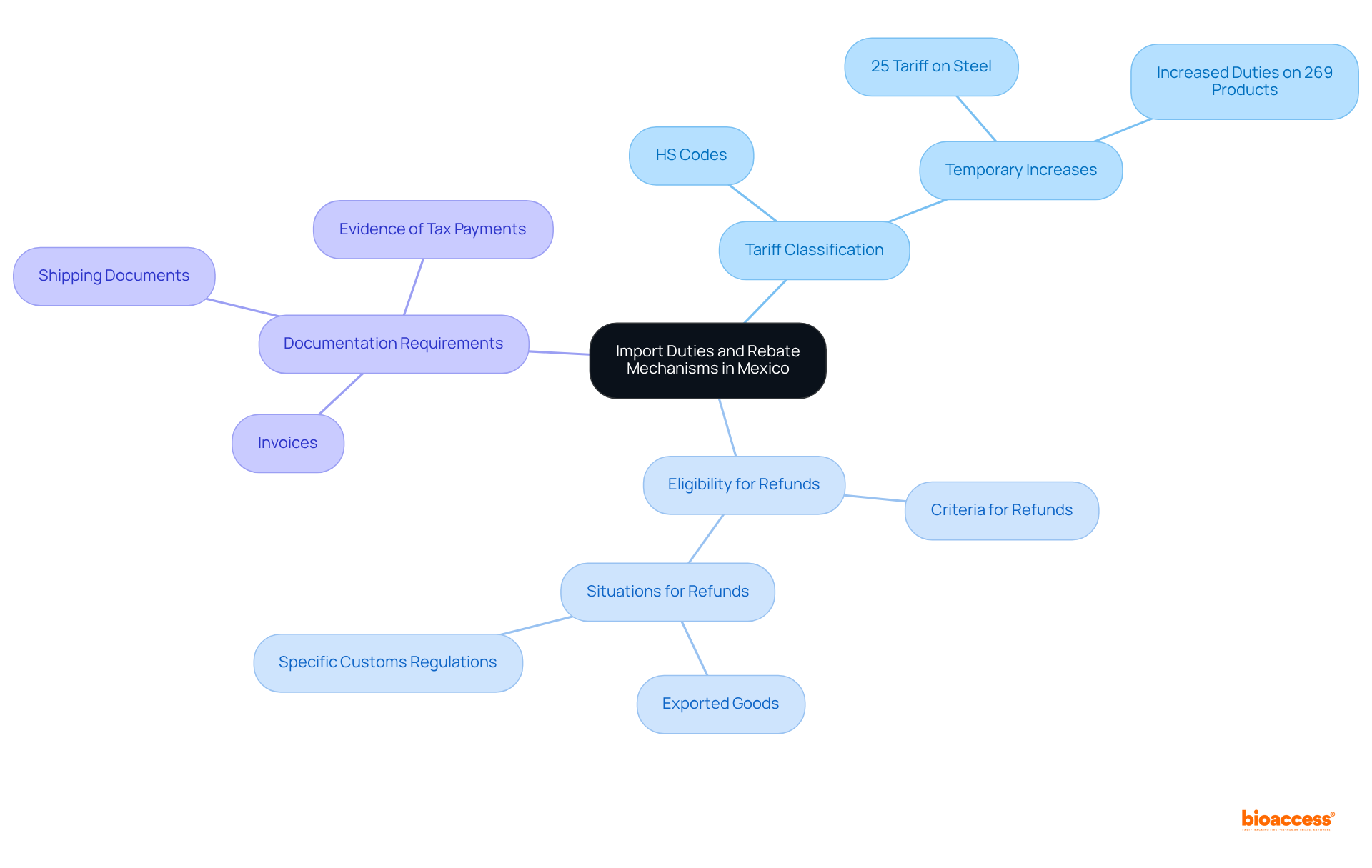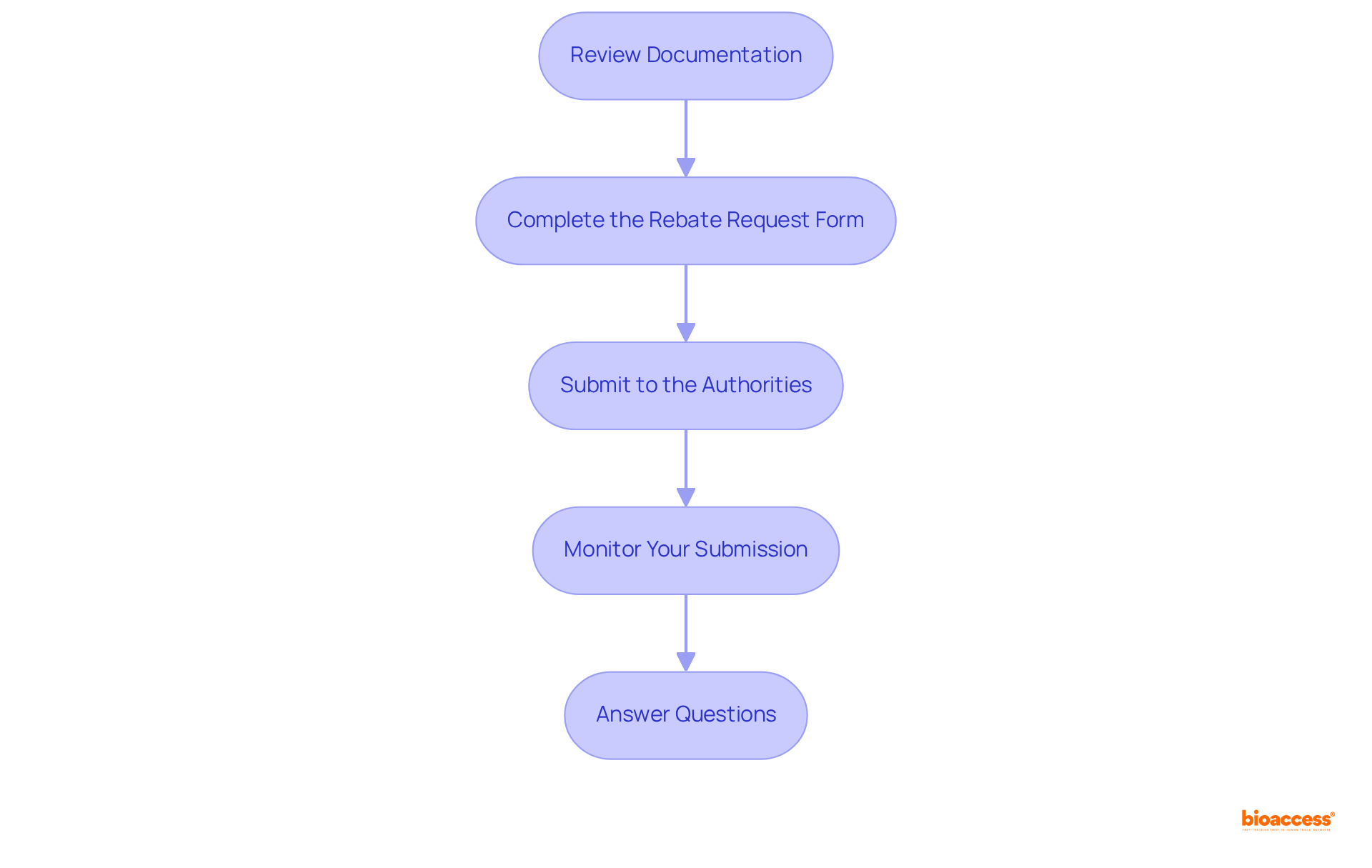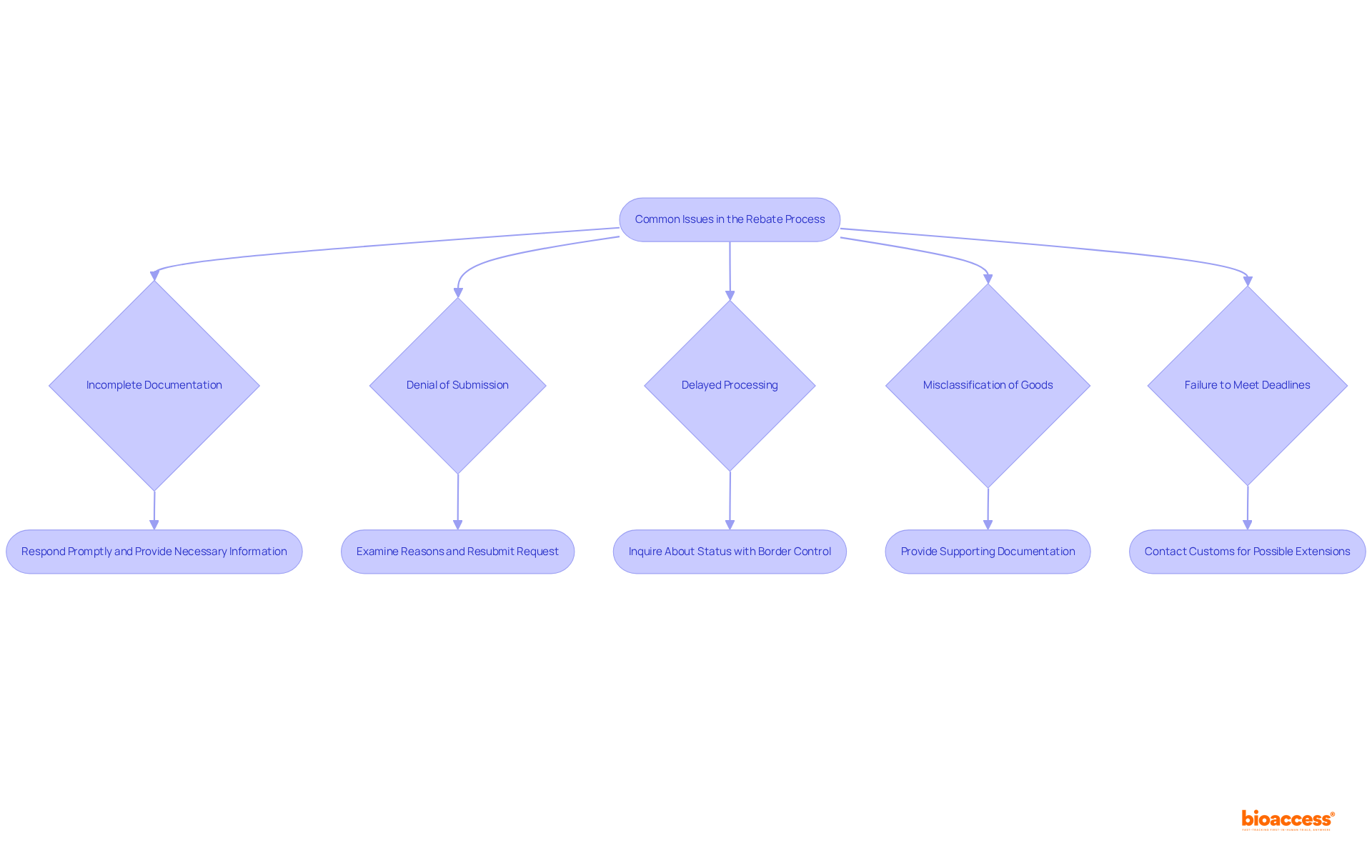


The article titled "Order Import Duty Rebate Study Mexico: A Step-by-Step Guide" serves as a comprehensive resource for navigating the process of applying for import duty rebates in Mexico. It outlines the essential steps and documentation necessary for successful claims, underscoring the critical nature of accurately classifying goods and gathering thorough documentation. Furthermore, it prepares readers to troubleshoot common issues, optimizing the rebate process to ensure compliance and maximize potential refunds. This guide is indispensable for those seeking to enhance their understanding and effectiveness in managing import duties.
Navigating the complexities of import duties in Mexico presents a formidable challenge for businesses aiming to optimize their financial outcomes. A thorough understanding of the intricate mechanisms involved in the order import duty rebate process not only provides a pathway to reclaim a portion of these costs but also ensures compliance with Mexican customs regulations.
Nevertheless, many importers grapple with challenges such as stringent documentation requirements and potential pitfalls within the application process.
What strategies can businesses implement to streamline their rebate claims and sidestep common missteps?
In Mexico, import charges represent taxes levied on items entering the nation, with rates varying based on product category and country of origin. A comprehensive understanding of these rates and classifications is essential for effective budgeting and compliance. Notably, the order import duty rebate study in Mexico has established systems that enable importers to reclaim a portion of the fees paid under specific conditions. Familiarizing yourself with key concepts is crucial:
Additionally, certain products, such as turkey, garlic, and lentils, are exempt from tariffs, illustrating the complexities of tariff classifications and their implications for importers. By mastering these concepts, you will be well-equipped to navigate the intricacies of the order import duty rebate study Mexico, ensuring compliance and optimizing financial outcomes. Moreover, businesses can implement strategies like tariff classification assessments and valuation adjustments to mitigate the impact of tariffs, as emphasized in case studies on effective management of import taxes.

To successfully apply for an import duty rebate in Mexico, it is essential to compile the following documentation:
Ensuring that all documents are accurate and complete is vital for a smooth application process. The significance of the commercial invoice cannot be emphasized enough; it is a fundamental component in the order import duty rebate study in Mexico, affecting both import taxes and the refund process. Accurate invoices help avoid complications and expedite the clearance of goods, ultimately facilitating timely access to the Mexican market.

Once you have gathered all necessary documentation, follow these essential steps to submit your import duty rebate application:
By following these steps and being mindful of common pitfalls, you can ensure that your order import duty rebate study in Mexico is submitted correctly and efficiently.

Even with thorough preparation, issues may arise during the import duty refund process. Here are some common problems and how to troubleshoot them:
Incomplete Documentation: If authorities request additional documents, respond promptly and provide the necessary information. Maintain copies of all correspondence. As specialists in regulations emphasize, keeping comprehensive records is essential, as it can significantly influence the outcome of your refund requests.
Denial of Submission: Should your submission be denied, carefully examine the reasons provided by the authorities. Address any deficiencies and resubmit your request as soon as possible. Remember, duty drawback permits recovery of up to 99% of tax costs incurred on imported goods, making it crucial to resolve any issues quickly.
Delayed Processing: If your application is taking longer than expected, reach out to the border control office to inquire about the status. Often, delays can be resolved through direct communication. Proactively engaging with regulations can help mitigate processing issues.
Misclassification of Goods: Ensure that your goods are classified correctly. If border authorities challenge the classification, provide supporting documentation to justify it. Misclassification can lead to significant delays and increased scrutiny, as highlighted in the case study "Impact of Frequent Customs Errors."
Failure to Meet Deadlines: Be vigilant about all deadlines related to the refund process. If you miss a deadline, contact customs to explore the possibility of extensions. Staying informed about deadlines is essential to avoid complications in your refund claims.
By being proactive and prepared to tackle these common issues, you can navigate the rebate process more effectively.

Navigating the order import duty rebate process in Mexico is crucial for importers aiming to optimize financial outcomes and ensure compliance with local regulations. A clear understanding of import duties and available rebate options can significantly influence a business's bottom line. This guide highlights the essential steps and considerations necessary for successfully reclaiming import duties, from comprehending tariff classifications to gathering required documentation and troubleshooting common issues.
Key insights include:
By mastering these elements, importers can enhance their chances of receiving timely refunds and mitigate potential delays or complications that could impact their operations.
Ultimately, the significance of understanding and effectively managing import duties and rebate mechanisms cannot be overstated. As businesses engage in international trade, being well-versed in the intricacies of the import duty rebate process in Mexico will facilitate smoother transactions and empower companies to make informed decisions that drive success in a competitive marketplace. Embracing these strategies paves the way for a more efficient and financially sound import operation.
What are import duties in Mexico?
Import duties in Mexico are taxes levied on items entering the country, with rates varying based on the product category and country of origin.
Why is it important to understand import duties and classifications?
Understanding import duties and classifications is essential for effective budgeting and compliance, as it helps importers anticipate costs and adhere to regulations.
What is tariff classification?
Tariff classification involves assigning a tariff classification code to each product, which dictates the applicable duty rate. Utilizing Harmonized System (HS) codes is crucial for accurately identifying a product's classification.
What recent changes have occurred regarding import duties in Mexico?
As of August 15, 2023, a Presidential Decree temporarily increased import duties on various products, including a 25% tariff on steel and other items from non-FTA countries.
How can importers qualify for refunds on import duties?
Importers may qualify for refunds if the goods are exported or if they meet specific criteria established by Mexican customs regulations.
What documentation is required to support refund claims?
Proper documentation to support refund claims includes invoices, shipping documents, and evidence of tax payments.
Are there any products exempt from tariffs in Mexico?
Yes, certain products such as turkey, garlic, and lentils are exempt from tariffs, highlighting the complexities of tariff classifications.
What strategies can businesses implement to manage import taxes effectively?
Businesses can implement strategies such as tariff classification assessments and valuation adjustments to mitigate the impact of tariffs.